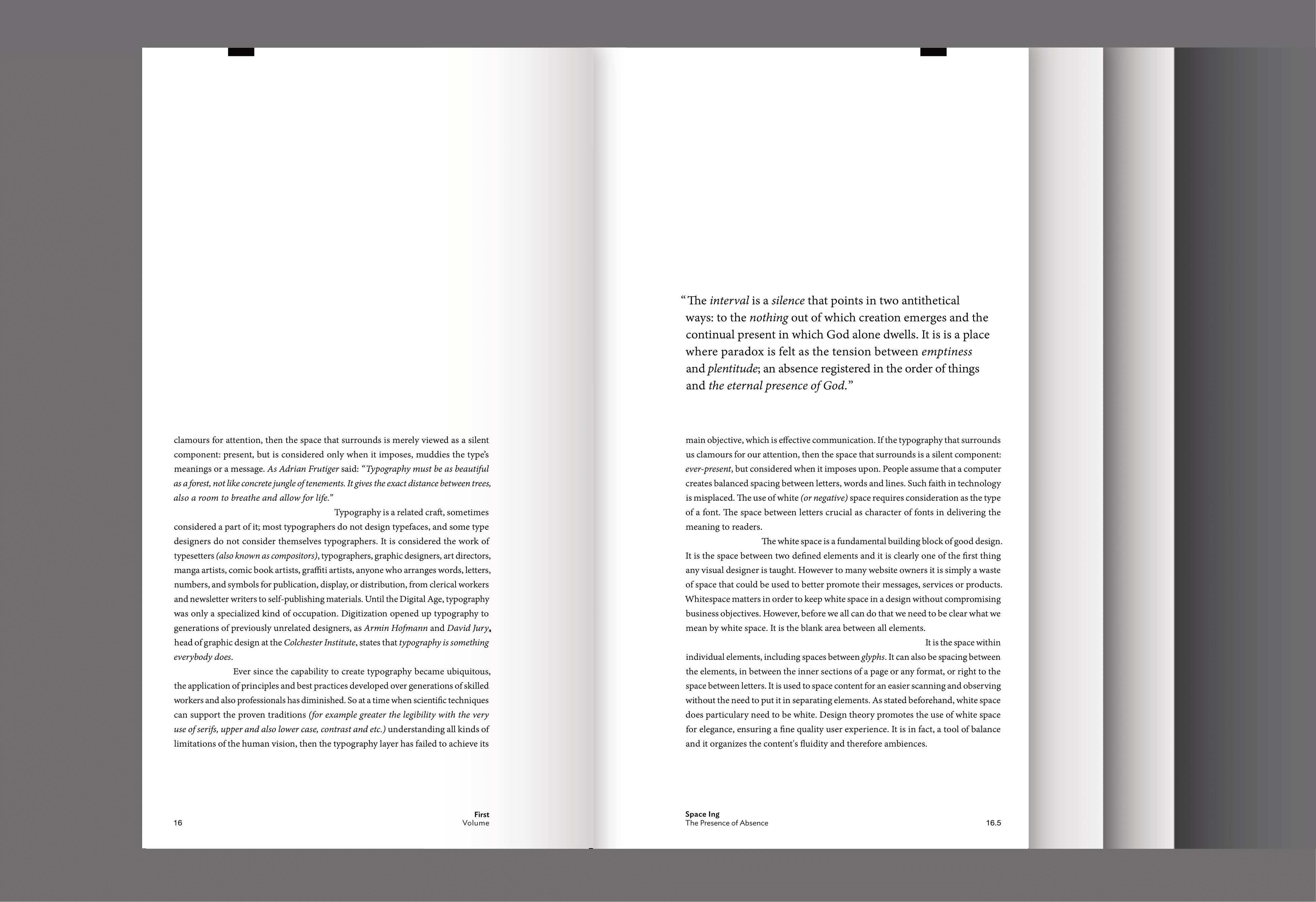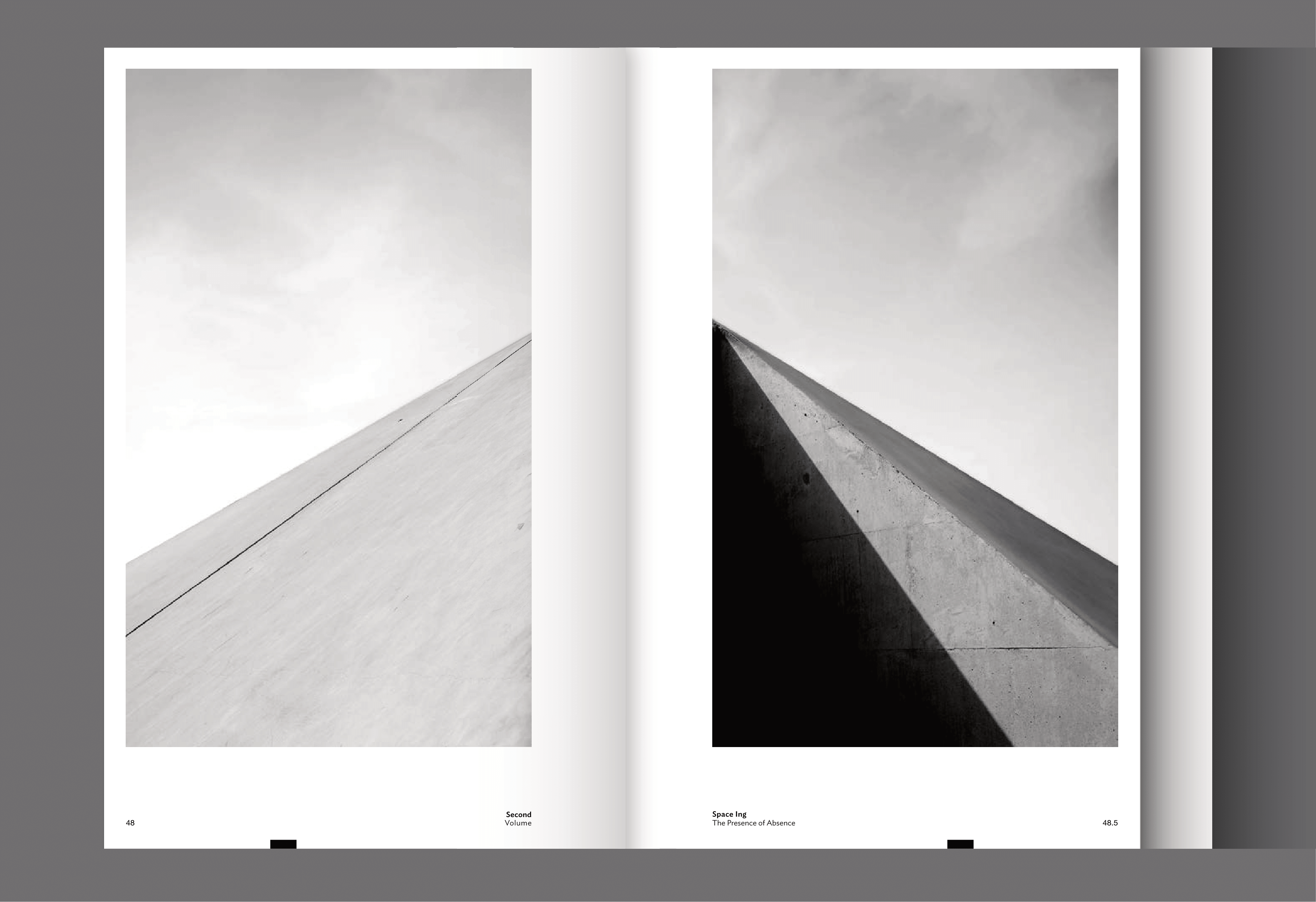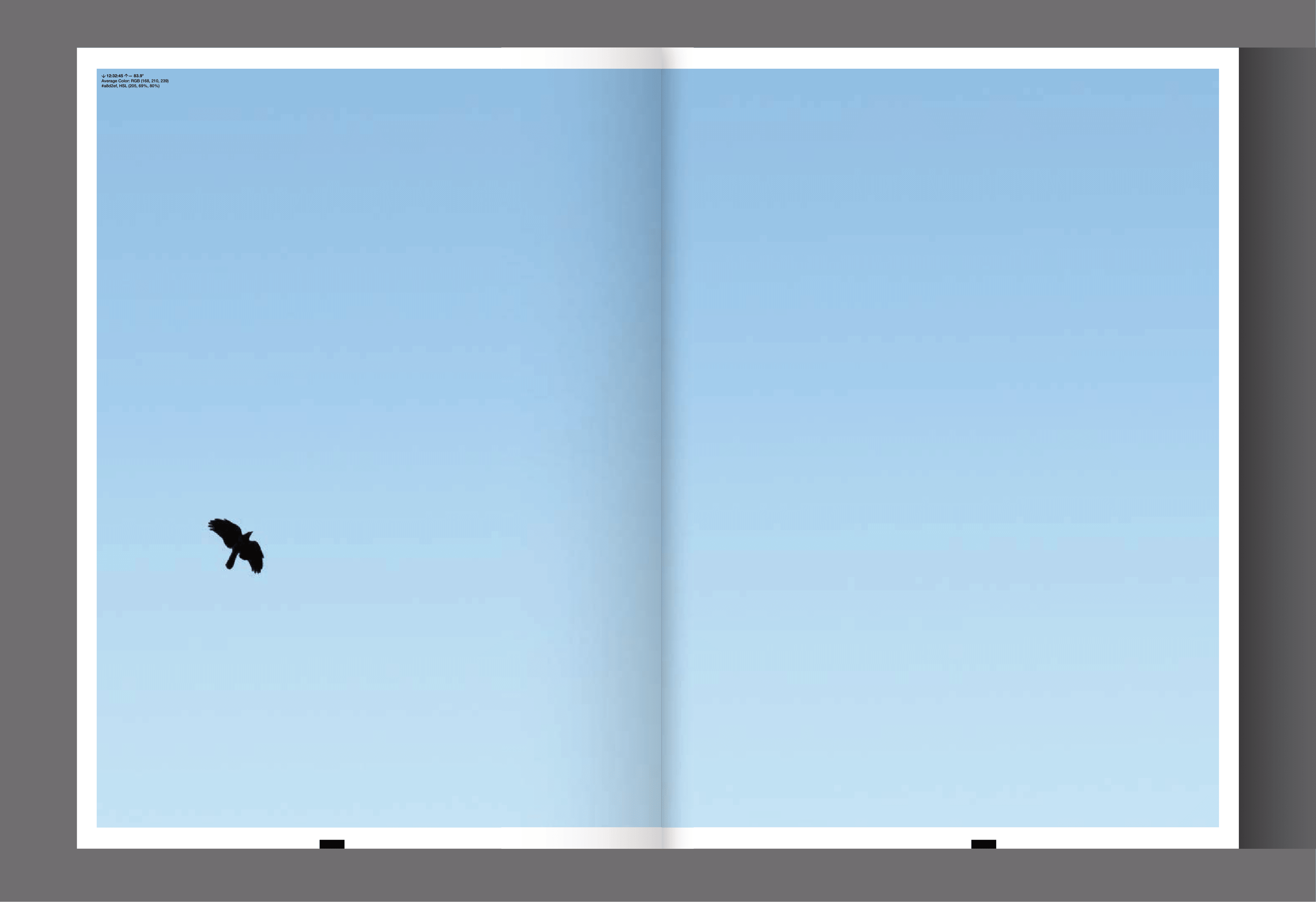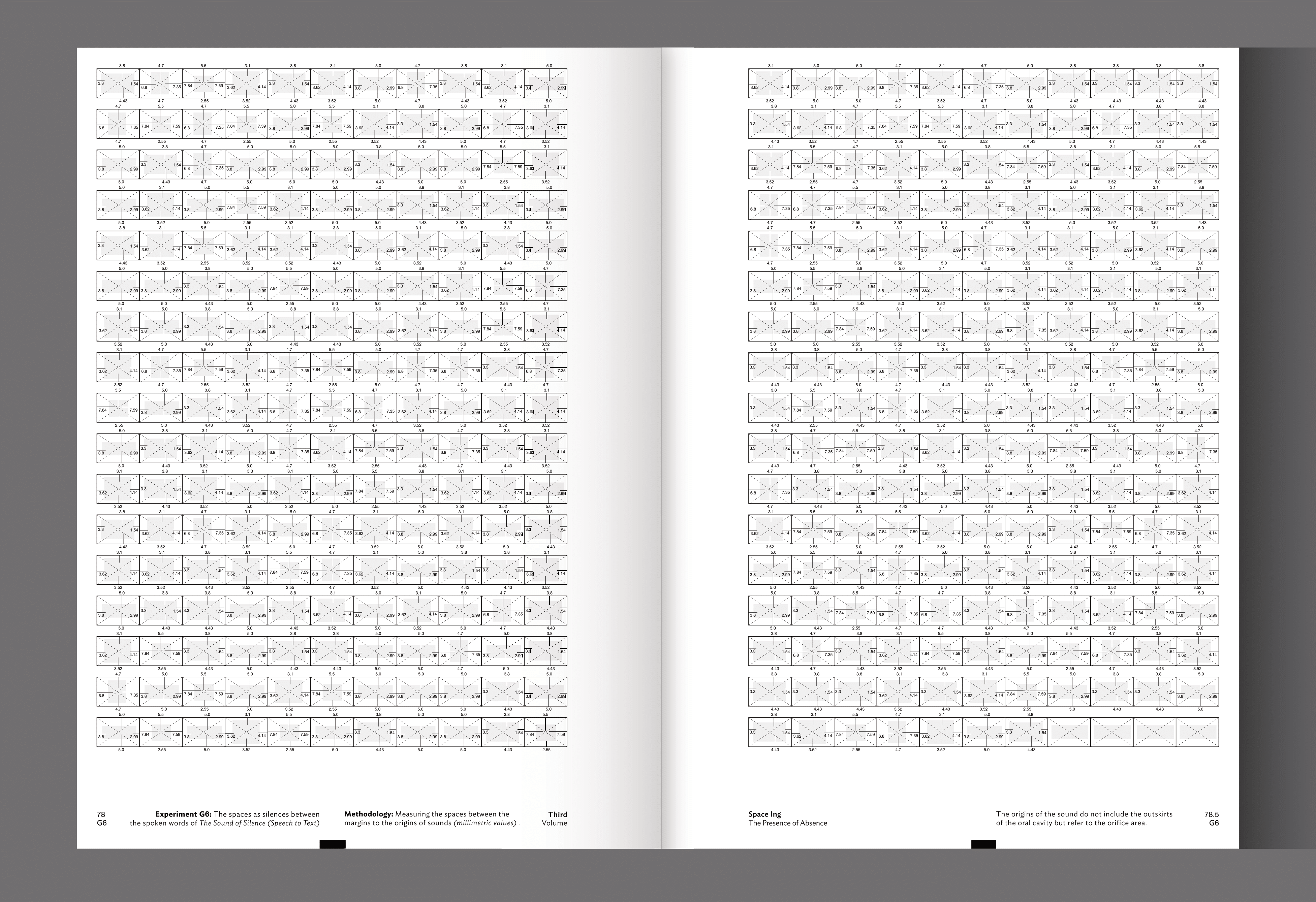Space Ing 2.0 The concept of void has attracted human reflection since ancient times, in both Western and Eastern culture. In the West, it became central in the Middle Ages, when it was associated by the Church with the nihilist current in Christian Europe. Conversely in the East, with emphasis on ancient China and Buddhism, the void was seen as an actual and present entity, with healthy potential and capacity, and therefore one that cannot be devoid of content.
The conceptual contradiction between positive and negative filtered into
daily life and multiple disciplines, including philosophy, theology, art, design, music and architecture. The essence of the void became the key object of study for artists, musicians and intellectuals An example is that of musician and theoretician John Cage who protested against the very concept of silence or empty space in the world with his soundless piece 4’33” (1952).
Space Ing is a non-disciplinary interpretive book studying the concept of space and the act of spacing, thereby challenging the common assumption that ‘space’ is devoid of content, without providing an alternative definition. This book seeks to examine it along three research directions: sound, time and space. Each book’s chapters offers a perspective that seeks, to reach the ontological essence of existence versus nonexistence, black versus white, and whatever lies in-between.






































































































































































































































































